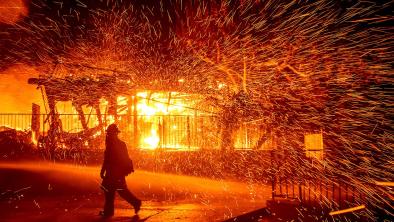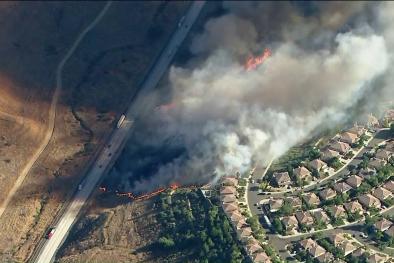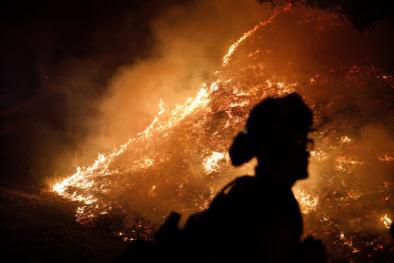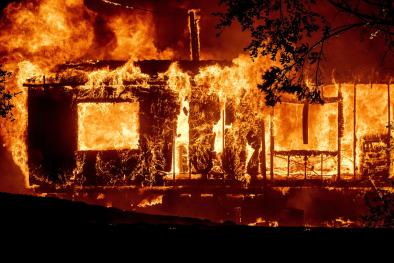Science Source
Widespread severe wildfires under climate change lead to increased forest homogeneity in dry mixed‐conifer forests
Over the next century, the combined effects of climate change and wildfires are likely to shift the composition of mixed-conifer forests toward more climate- and fire-resilient species, such as ponderosa pine.
Brooke Cassell, the study’s lead author and a recent Ph.D. graduate
- States that climate warming in the western United States is causing changes to the wildfire regime in mixed‐conifer forests
- States that rising temperatures, longer fire seasons, increased drought, as well as fire suppression and changes in land use, have led to greater and more severe wildfire activity, all contributing to altered forest composition over the past century
- Aims to understand future interactions among climate, wildfire, and vegetation in a fire‐prone landscape in the southern Blue Mountains of central Oregon
- Uses a spatially explicit forest landscape model, LANDIS‐II, to simulate forest and fire dynamics under current management practices and two projected climate scenarios
- The results suggest that wildfires will become more frequent, more extensive, and more severe under projected climate than contemporary climate
- Projected climate change generated a 20% increase in the number of extreme fire years (years with at least 40,000 ha burned), causing large shifts in tree species composition, characterized by a decline in the sub‐alpine species (Abies lasiocarpa, Picea engelmannii, Pinus albicaulis) and increases in lower‐elevation species (Pinus ponderosa, Abies grandis), resulting in forest homogenization across the elevational gradient
- This modeling study suggests that climate‐driven increases in fire activity and severity will make high‐elevation species vulnerable to decline and will reduce landscape heterogeneity
- These results underscore the need for forest managers to actively consider climate change, altered fire regimes, and projected declines in sub‐alpine species in their long‐term management plans
Related Content
Headline

Oct 31, 2019 | The Weather Channel
Two New California Wildfires Burn Homes In San Bernardino, Riverside; Evacuations Underway
Headline

Oct 29, 2019 | BNN
California Fire Damage Already at $25.4 Billion, and Counting
Headline

Oct 29, 2019 | The Mercury News
California fires: Is climate change making the winds stronger?
Headline

Oct 29, 2019 | Washington Post
What’s driving the historic California high-wind events, and worsening the wildfires


